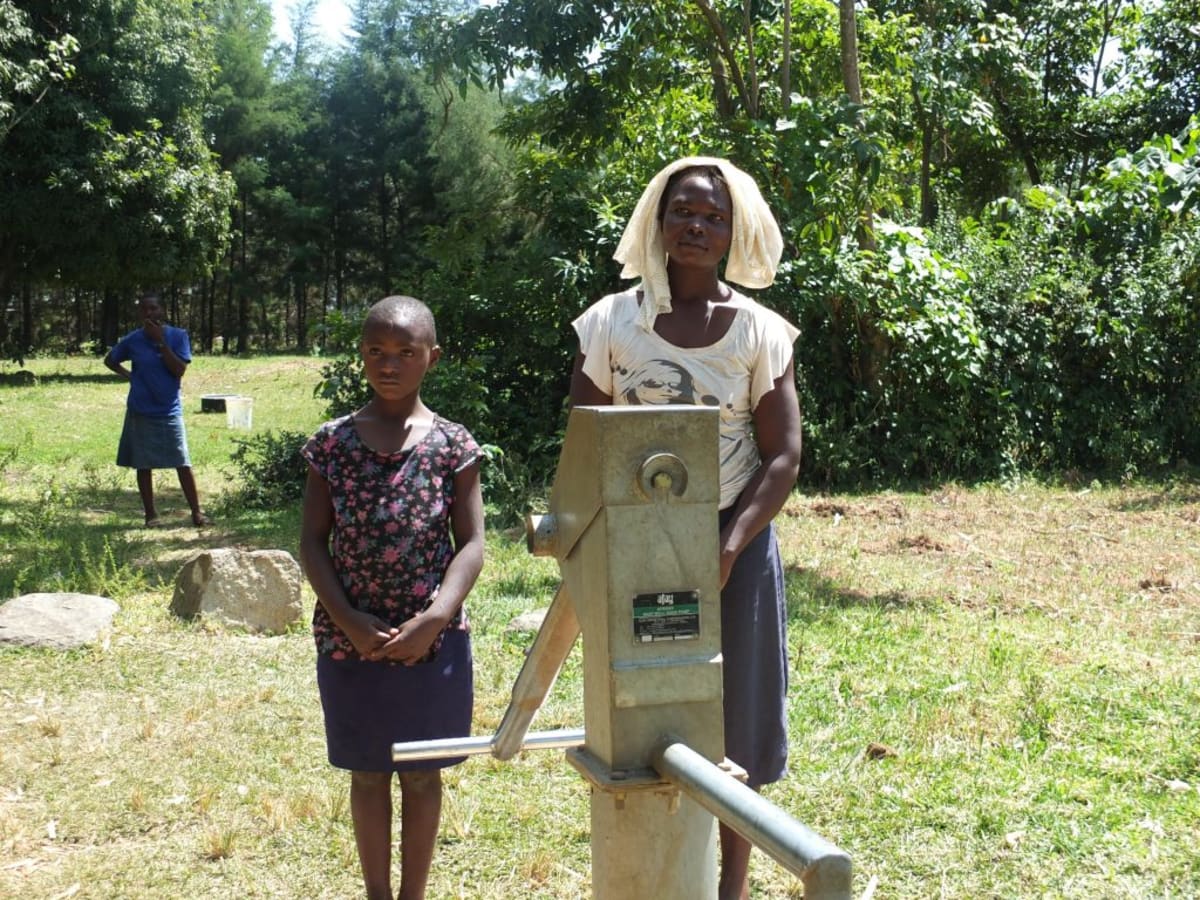This project is a part of our shared program with Safe Water and Sustainable Hygiene Initiative (SAWASHI). Our team is pleased to directly share the below report (edited for clarity, as needed).
Background Information
Chebwai B Community consists of middle-class people who rely on farming and raising livestock. The community is entirely surrounded by maize plantations. Most homesteads are grass-thatched while others are semi-permanent (concrete). People in this community are Christians who attend different denominations such as Catholic, Pentecostal Assemblies of God, and Friends Church Quakers. Every family in this community is made up of a husband, wife and children. Society has set the roles of each family member: Husbands are the breadwinners of their families, providing security, shelter, food and basic needs for their families. Wives carry out household chores such as cooking, fetching water and cleaning. Every child goes to school. When they're not in school, they're helping their parents with jobs like collecting firewood, looking after livestock, and fetching water.
The assistant chief wants to help his community, and thus wrote an application letter to SAWASHI describing Chebwai B's needs. Chebwai is home to approximately 370 people from 37 different households, however the water point will serve people from surrounding communities as well.
Water Situation
The village uses the old, broken well as their water source. The well was installed in 1989 by the Kenya Finland Company. During our initial survey of the Chebwai Community, the pump was missing. Nobody knows exactly when this happened, but most likely the pump was stolen and then sold in parts. For as long as the community can remember, they have been using a bucket tied to a rope to access the well's water.
Without a proper well pad or a pump, rainwater and "backwash" leak back into the well. It is unprotected from contaminants that are surely reaching the water inside. A new well pad must be constructed and a new Afridev pump installed.
Once women and children get this contaminated water back home, they empty some of it into clay pots. The clay pots keep the water cooler, so they are set aside just for drinking. Some locals boil their water before drinking, but outbreaks of diarrhea and typhoid are still the norm. Local farmer Juma Alfayo says that "outbreak of waterborne diseases such as typhoid is commonly experienced because of taking contaminated water in which most of us do not treat. This results to spending a lot of money on [medicinal] treatment!"
Sanitation Situation
More than half of households have a pit latrine. Most of these have doors, but they have come unattached from heir hinges. The pit holes do not have covers, and let odor out and flies in.
The same number of homes have bathing rooms meant for bathing and brushing teeth. Many of these households have helpful tools like dish racks and clotheslines, but no hand-washing stations were observed during our visit.
Locals tend to dispose of their garbage in the open fields and plantations that surround the community.
Plans: Hygiene and Sanitation Training and Hand-Washing Stations
Community members will be trained on hygiene and sanitation practices for two days. The facilitator will use the PHAST (Participatory Hygiene and Sanitation Training) method to teach about topics like:
- Proper water storage and treatment
- Hand-washing
- Proper food preparation and storage
- Waste disposal
- How disease is spread and how to block its transmission
Training will result in the formation of a water user committee which will oversee, manage, and maintain the rehabilitated well.
We also plan on delivering two hand-washing stations in time for training, so that they may be used for demonstrations and practice.
Plans: Well Rehabilitation
The well has sufficient supply of water that has never run dry (even in the driest seasons!). The well has a total depth of 10 meters and a static water level of 4.2 meters.
The rehabilitation process will include material collection, pad reconstruction, flushing, test pumping, water quality testing, water treatment, and then pump installation.
Everyone in the Chebwai B Community is very excited about this project. They are fully involved in ensuring that our team has everything necessary for successful training and well rehabilitation! The local government has been playing their part in keeping the community informed and motivated, and we look forward to working with them more.

 Protected Dug Well
Protected Dug Well





















